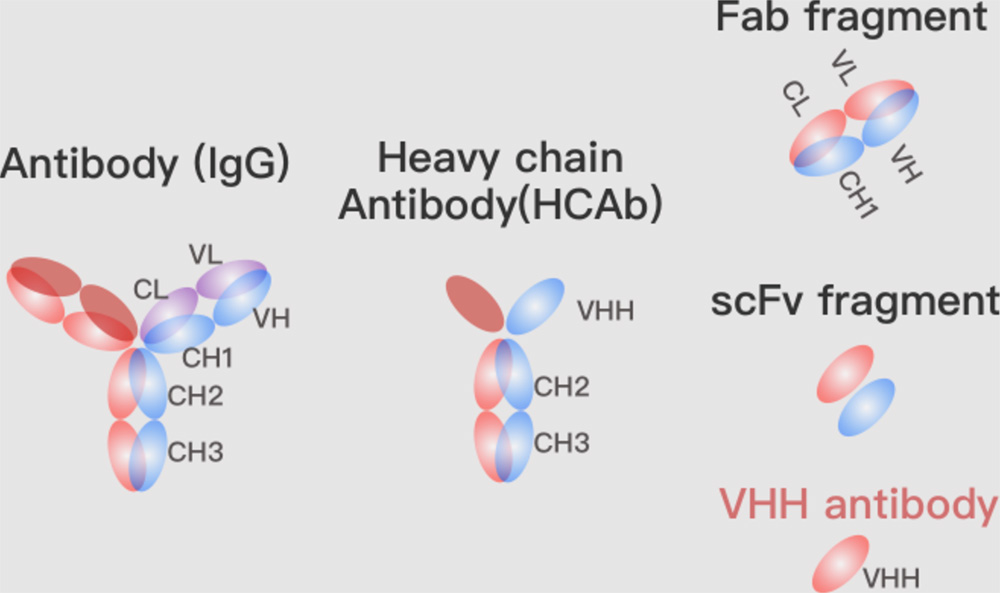VHHs, also known as single-domain antibodies or nanobodies, are the smallest antigen-binding fragments derived from heavy-chain-only antibodies found in camelids, such as alpacas, llamas and camels. First discovered in 1993, VHH antibody fragments offer unique characteristics which are particularly advantageous in therapeutics, diagnostics, and research tools. This is due to their small size and structure which allows them to penetrate tissues and reach targets that may be challenging for conventional antibodies, in addition to their stability and ability to bind with high affinity to specific targets.1
VHH Library Generation
There are several ways to isolate VHHs from camelids against a target of interest and to build a library for screening, such as immunized, naïve, and synthetic/semi-synthetic libraries. The most common approach is by immunizing camelids and building a library based on the repertoire of heavy-chain immunoglobulins.2,3 The process is as follows:
- Camelid immunization: In 2 months, camelids are injected four to eight times with target antigens.
- PBMC isolation: Peripheral blood samples are collected, and peripheral blood mononuclear cells are separated.
- mRNA extraction and reverse transcription: mRNA is converted into cDNA.
- Phage library generation: PCR is used to amplify the VHH gene regions.
- Biopanning and library screening.
- Positive clone sequencing and sequence analysis.
- VHH expression and purification.

